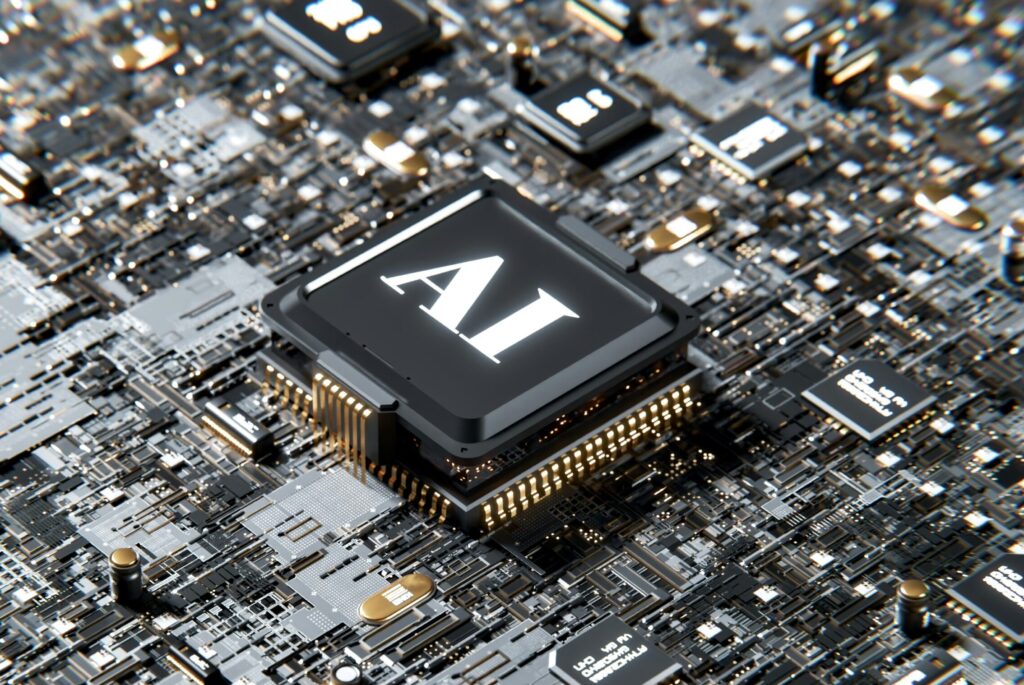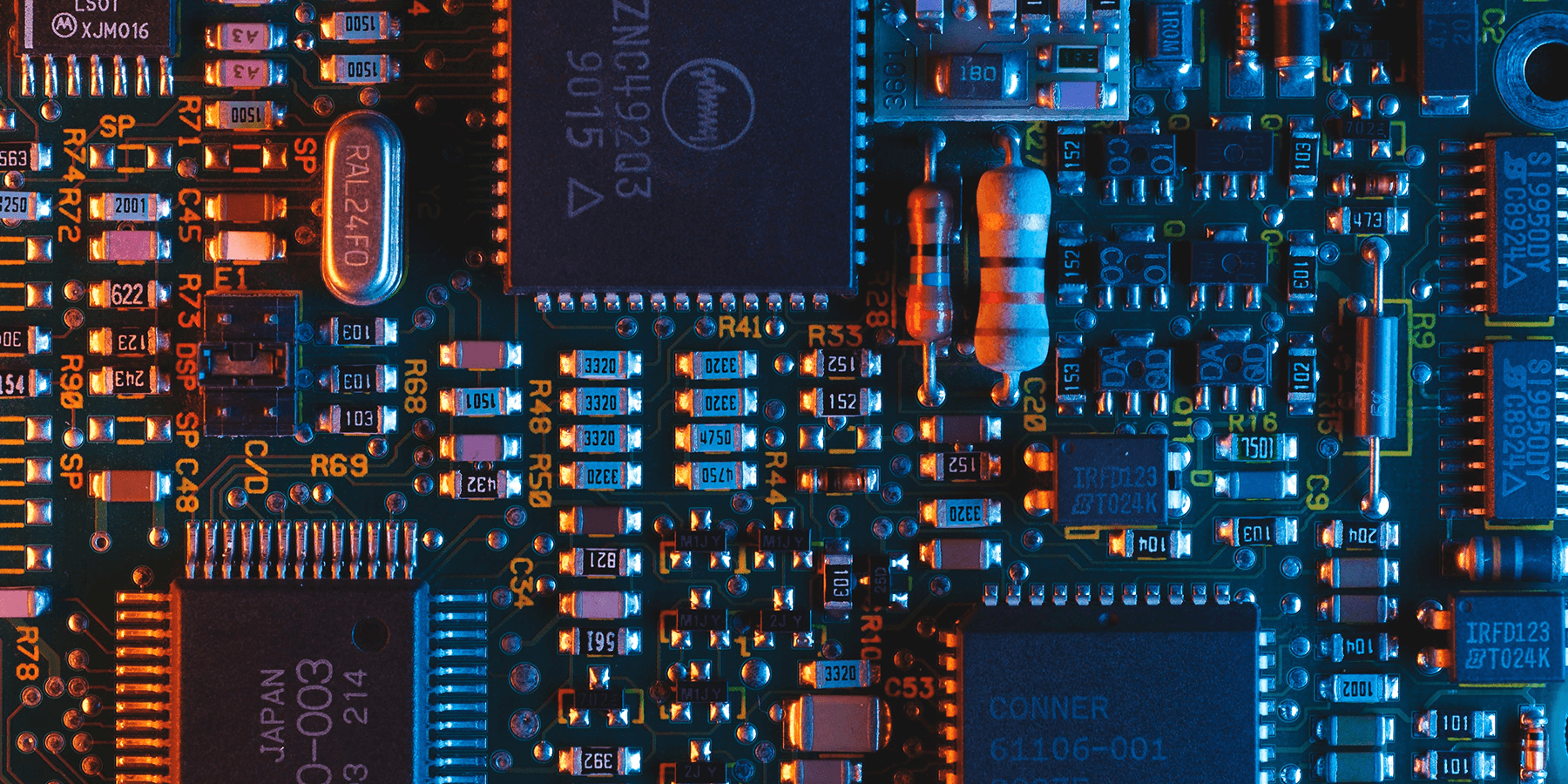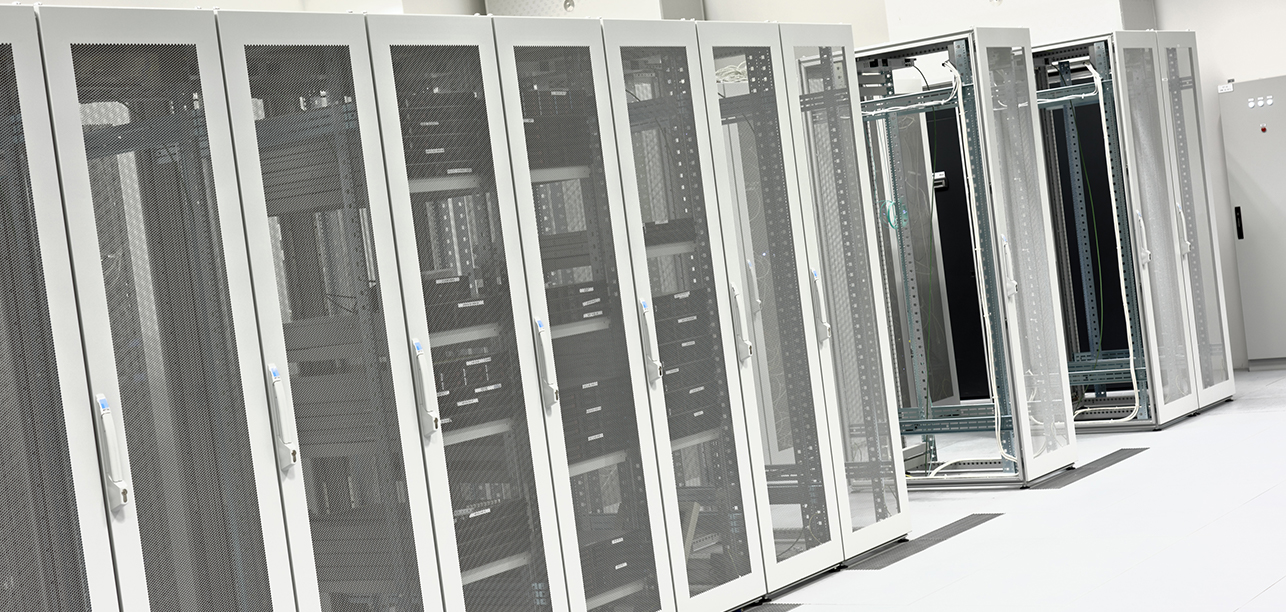Tag: bare metal

Bare Metal vs. Public Cloud: Peak Performance for AI Applications
The ever-evolving landscape of Artificial Intelligence (AI) demands a robust hosting infrastructure to guarantee peak performance, scalability, and cost-effectiveness. While the public cloud offers undeniable flexibility, bare metal hosting from providers like HorizonIQ provides distinct advantages tailored specifically for the demanding nature of AI applications.
Let’s delve into the key benefits of hosting AI workloads on bare metal compared to the public cloud.

Unparalleled Performance and Low Latency
AI applications, especially those involving deep learning and high-throughput computing, require exceptional responsiveness and minimal delays. Bare metal hosting offers dedicated hardware resources, bypassing the virtualization layer that can introduce overhead. This translates to:
Superior computational power: Dedicated resources ensure faster processing and reduced inference times.
Enhanced model training efficiency: Eliminate bottlenecks for faster model development and training cycles.
Improved overall application performance: Critical for real-time AI applications like autonomous vehicles, financial trading algorithms, large language models (LLMs), and healthcare diagnostics.
Tailored Infrastructure for Demanding Workloads
Bare metal hosting offers unparalleled control and customization over the hardware and software stack. AI developers can fine-tune the infrastructure to their specific models’ needs, optimizing resource utilization for accelerated compute tasks. This level of control is particularly beneficial for:
Complex AI workloads: Fine-tune hardware configurations for specialized needs.
Low-level optimizations: Unrestricted access empowers researchers and data scientists to push the boundaries of innovation.
Prioritizing Data Privacy and Security
Data privacy and security are paramount for AI applications handling sensitive information. Bare metal hosting allows organizations to:
Maintain complete control over data: Minimize the risk of exposure or unauthorized access inherent in multi-tenant public cloud environments.
Ensure regulatory compliance: Meet industry standards and instill confidence regarding data integrity and confidentiality.
Cost-Efficiency for Predictable Workloads
While the public cloud offers scalability and pay-as-you-go models, bare metal hosting can be more cost-effective in specific scenarios. Here’s why:
Eliminate virtualization overhead: Reduce costs associated with hypervisor licensing, instance sizing, and resource contention.
Predictable pricing: Flat, predictable pricing from HorizonIQ avoids variable costs associated with public cloud usage.
Optimized cost-performance ratio: Organizations with consistent or high-performance workloads benefit from long-term cost savings.
Navigating Compliance and Regulatory Requirements
Certain industries face stringent data privacy, sovereignty, access, and auditing regulations. Bare metal hosting offers greater flexibility in adhering to these mandates, making it an attractive option for AI applications in highly regulated sectors like finance, healthcare, and government.
Choosing the Right Infrastructure for AI Success
While the public cloud offers convenience, bare metal provides distinct advantages for performance-critical AI workloads. By carefully evaluating factors like data privacy, regulatory compliance, and workload demands, organizations can make informed decisions about the hosting solution that aligns best with their AI objectives, leading to success in the era of AI-powered innovation.
Uncover the unmatched performance of AI on Bare Metal. Learn more about our solutions.
Explore HorizonIQ
Bare Metal
LEARN MORE

What Applications Run Best on Bare Metal Servers?
Bare metal servers are physical servers that are not virtualized, meaning they don’t have a layer of virtualization software between the hardware and the operating system. This characteristic of being “clean” of overhead makes them suitable for certain types of applications that require high performance, dedicated resources, and low-latency access to hardware.
Here are Some Examples of Applications that can Benefit from Bare Metal Servers:
Database Servers:
Databases, especially those handling high transaction volumes, benefit from the direct access to physical resources. This reduces contention and leads to better database performance.
Real-Time Applications:
Applications requiring low-latency responses, such as online gaming servers, financial trading platforms, and real-time communication services, benefit from the reduced overhead.
High-Performance Web Applications:
Web applications dealing with large numbers of concurrent users and complex processing take advantage of bare metal servers to ensure consistent performance and responsiveness.
Dedicated Hosting:
Applications that require complete control over hardware resources, including specific configurations and hardware optimizations, often opt for bare metal server for hosting.
Machine Learning and AI Training:
Training complex machine learning and artificial intelligence models often demands significant computational power and memory. Bare metal servers provide the required resources without the overhead introduced by virtualization.
High-Performance Computing (HPC):
Applications in scientific research, simulations, financial modeling, and engineering often require massive computational power. Bare metal servers provide dedicated resources and minimize virtualization overhead, resulting in better performance for these compute-intensive workloads.
Big Data and Analytics:
Data processing, analytics, and data warehousing tasks often involve large-scale data manipulation and processing. Improved performance and lower latency, which can be crucial for time-sensitive data analysis.
Certain applications have an absolute need for “clean” access to the underlying hardware, and for performance that comes from dedicated resources. The HorizonIQ Team will partner with you to discuss your specific requirements and how we can help your business achieve even more.
Explore HorizonIQ
Bare Metal
LEARN MORE

Why AMD EPYC Processors Are Right for You
AMD EPYC processors are known for their high performance, advanced features, and scalability, making them ideal for a wide range of server applications.
We recently released several new models of standard server packages of AMD EPYC CPUs and chassis as part of our HorizonIQ Bare Metal offering.
In this blog, we’ll cover processor specifications, opportunities for customizations, use cases, and businesses that can benefit.
2nd and 3rd Generation AMD EPYC
We’ve introduced two new 2nd generation AMD EPYC models into the HorizonIQ fleet:
| Processor | Cores | Ghz | Max Ghz | Drive Bays |
| Single AMD EPYC 7302P | 16 | 3.0 | 3.3 | 10 |
| Single AMD EPYC 7402P | 24 | 2.8 | 3.35 | 10 |
Also, there are four new 3rd generation AMD EPYC models that include:
| Processor | Cores | Ghz | Max Ghz | Drive Bays |
| Single AMD EPYC 7313P | 16 | 3.0 | 3.7 | 10 |
| Single AMD EPYC 7443P | 24 | 2.85 | 4 | 10 |
| Single AMD EPYC 7543P | 32 | 2.8 | 3.7 | 4 |
| Single AMD EPYC 7643 | 48 | 2.3 | 3.6 | 4 |
These new chassis can support up to 10 NVMe drives installed, and the configurations have dual 10 Gbps Ethernet ports and can support from 128 GB to 2TB of RAM installed.
The chassis for the 7313P and 7443P can accept up to 10 SSD or NVMe drives for very high IOPS-intensive workloads. The standard chassis for the 7543P and 7643 models will accept 4 SSD or NVMe drives.
Custom Options for GPU Capabilities
Customized chassis can be ordered to include up to two NVIDIA graphic processing units (GPU). GPU options include NVIDIA A2, A10, A100, RTX A4000, and RTX A5000. This can make a useful solution for data analytics and for other high-performance computing (HPC) workloads
Increased Drive Bays
Most of these new chassis can be upgraded to accommodate up to ten NVMe or SSDs. Also, chassis options can accommodate up to twelve mechanical (e.g. SATA) drives.
Consult with the HorizonIQ Team for additional customized solutions, including more drive count, GPUs, and NVMe/SSDs to meet your unique requirements. Chat Now.
Use Cases for AMD EPYC Processors
Web Hosting and Web Applications:
For hosting multiple websites and web applications, EPYC processors offer the processing power and memory capacity to handle a large number of concurrent requests.
Database Servers:
EPYC processors can power database servers handling transactions, data storage, and retrieval. Their high core counts and memory capacity are particularly useful for managing large-scale databases.
Big Data and Analytics:
Servers equipped with EPYC processors can handle large datasets and complex analytics tasks efficiently. This is crucial for applications like real-time data processing, machine learning, and artificial intelligence.
Virtual Desktop Infrastructure (VDI):
EPYC processors can efficiently handle VDI environments, enabling smooth operation of multiple virtual desktops and applications for users.
Rendering and Graphics Workloads:
Creative industries like media and entertainment often require powerful servers for rendering and graphics-intensive tasks. EPYC processors can accelerate these workloads, reducing rendering times.
Security and Encryption:
The EPYC processors’ robust security features, such as AMD Infinity Guard, are valuable for ensuring data protection and encryption for sensitive workloads.
AI and Machine Learning:
Servers using EPYC processors can handle AI and machine learning workloads, enabling faster model training and inference tasks.
Businesses that Can Benefit from AMD EPYC Processors
Financial Services:
EPYC processors can support the demanding computational requirements of financial services, including risk analysis, algorithmic trading, and high-frequency trading.
Healthcare and Life Sciences:
Servers powered by EPYC processors are used in genomics research, medical imaging, and drug discovery, where significant computational power is required for data analysis and simulations.
Oil and Gas Exploration:
EPYC processors can process seismic data and perform complex simulations used in oil and gas exploration, improving efficiency and accuracy.
AMD EPYC processors are versatile and capable of handling a wide range of workloads, making them a compelling choice for modern data centers and server deployments. The HorizonIQ team will partner with you to determine the processor model and customizations needed to meet the exact requirements of your application and workload.
Explore HorizonIQ
Bare Metal
LEARN MORE

Bare Metal for Big Data: Performance, Price and Value
In 1597, Sir Francis Bacon wrote, “Knowledge is power.” This may be no less true now than it was then, but a few things have changed: most notably, the magnitude of the volume of information we now have access to. And since the launch of the Information Age, that information has been growing exponentially.
Companies today need to leverage that information and turn it into knowledge quickly to remain competitive. As web traffic increases, wearable technologies are introduced, and the Internet of Things (IoT) continues to proliferate, what used to be measured in megabytes and gigabytes is now measured in petabytes and beyond.
Data analytics powered by batch processing overnight no longer suffices when data-driven decisions must be made in real time.
The Opportunity of Bare Metal for the Challenge of Big Data
Whether it’s on-demand advertising, financial analysis, preventive security, health care research, or any of the numerous other use cases for data analytics, companies and organizations are challenged with processing the growing volume of data being captured daily in real time. Alongside the growth of the amount of data, the costs of infrastructure to store and analyze that data have also increased substantially.
New technologies like Apache Hadoop and Aerospike have become standard frameworks for big data processing, and bare metal servers have become the most common method of delivering these frameworks in a high-performance and scalable architecture.
By running big data frameworks on bare metal servers, companies can leverage 100 percent of the hardware performance, while still maintaining scalability and automation through APIs—just like provisioning virtual instances in the cloud. This allows companies to not only get value from their data quickly to make informed decisions but also to easily scale the process as the data set continues to grow.
Big Data Performance and Bare Metal Value
But performance is just one piece of the equation. Even as demand for big data-driven decision-making grows, cost efficiency remains an ever-present consideration for many businesses. With a variety of service providers available, it can be difficult to evaluate your options.
INAP commissioned Cloud Spectator to compare our Bare Metal infrastructure running Aerospike and Hadoop against well-known industry heavyweights Amazon Web Services and IBM Cloud. The study compared both raw performance and performance per dollar spent.
The conclusion was clear: INAP’s Bare Metal goes toe-to-toe on performance with Amazon and IBM’s offerings at a more competitive price point—offering greater value. In Cloud Spectator’s testing, INAP Bare Metal provided up to 4.6-times better price-performance.
For more information on the performance and price-performance of INAP Bare Metal compared to IBM and AWS’s offerings, download Cloud Spectator’s report.
Explore HorizonIQ
Bare Metal
LEARN MORE

Bare Metal vs. Hypervisor: The Evolution of Dedicated Servers
With the “cloudification” of IT, new terms have appeared across the hosting industry. Some of the most popular terms are bare metal and hypervisor. But what are these? Let’s clarify the bare metal first. To answer simply, a bare metal server is your traditional dedicated server with a hip new name for the cloud generation! Let’s have a look at what a dedicated/bare metal server is.
What is Bare Metal?
Bare metal is a single tenant server. This means only you are taking the resources of the server. The server belongs to you and you only. Compared to the cloud model where multiple users (multi-tenancy) reside on the same physical server, the bare metal server only has one customer on the server.
Single tenancy allows you to avoid the noisy neighbor effect, which is described as a user impacting the performance and stability of other users within the same server. With bare metal, since you are the sole user, you will not witness the noisy neighbor effect.
From a financial perspective, the bare metal server is typically billed per month. This means no surprise on your bill at the end of the month. However, with the “cloudification” of hosting, bare metal is also available in hourly billing, so keep in mind that costs are variable when selecting an hourly usage plan.
Bare metal supports multiple types of operating systems on top of it, including hypervisors. This brings us to our next point—the difference between bare metal and hypervisors.
What is a Hypervisor?
How does hypervisor differ from bare metal? A hypervisor is an operating system that can create virtual machines (VM) within a bare metal server.
A traditional bare metal server: The operating system (CentOS, Debian, Redhat, SUSE, Ubuntu, Windows Server, etc.) is installed directly on the server, and applications are running natively in the operating system.
A bare metal server installed with a hypervisor provides the user with a management suite to create virtual machines on the server. The hypervisor should not run applications natively; rather, its purpose is to virtualize your workloads into separate virtual machines to gain the flexibility and reliability of virtualization.
Multiple hypervisors exist on the market. We have reached a point with virtualization technology where the ecosystem is very mature and all options are very similar. So the choice of a hypervisor relies mainly on the following points: your current familiarity with a vendor, your current infrastructure technologies, your staff certifications, and of course, the cost of ownership.
Make sure to understand what features you are looking for and which vendor offers the best solution based on your budget and compatibility with your current infrastructure to avoid painful migration and unexpected issues.
As for the bare metal selection, be certain to choose the proper billing method that fits your budget and your needs. If you require on-the-fly resources that will likely be shut down within hours or weeks, then hourly billing is probably the way to go. However, if you are looking to deploy a steady workload that will run for multiple months, then monthly billing is likely the best choice.
As for the hardware itself, leverage the hourly billing of bare metal to test your application on the server of your choice, and run tests for a few days or weeks until you find the right bare metal configuration for your performance requirements.
Bare Metal or Hypervisor? Making the Choice
In the end, there is no single story for the bare metal server with native workload versus bare metal with a hypervisor and virtualized workloads. Both bare metal and hypervisor have their advantages, and nothing would stop a small development firm from leveraging bare metal servers with hypervisors. It simply is a matter of selecting which technology best fits your needs, and what you feel most comfortable with.
Start with a proof of concept with an hourly bare metal server (with a hypervisor or running your application natively on the bare metal), and see how your application performs. Evaluate the impact on your infrastructure and service management, and move forward according to your findings and experience. There’s nothing like giving it a spin to get the feel of it!
Explore HorizonIQ
Bare Metal
LEARN MORE

 Bare metal remains to go-to choice for companies running data-intensive applications, such as big data and analytics solutions, online gaming and mobile advertising platforms. As businesses scale their operations worldwide, the need for global availability of these applications has increased. To meet this demand, Internap’s bare metal offering is now available in our London and Hong Kong data centers.
Bare metal remains to go-to choice for companies running data-intensive applications, such as big data and analytics solutions, online gaming and mobile advertising platforms. As businesses scale their operations worldwide, the need for global availability of these applications has increased. To meet this demand, Internap’s bare metal offering is now available in our London and Hong Kong data centers.
Big data and latency-sensitive applications run better on bare metal than in traditional virtual cloud environments, as demonstrated by our customers and the latest Cloud Spectator benchmarking report. In addition to significant cost savings, the findings also show the benefits of running big data workloads on high-performance NoSQL databases such as Aerospike and Internap’s bare-metal servers. As the need for powerful, transaction-intensive applications becomes an integral part of business strategy, a high-performance infrastructure that includes bare metal can enable optimal performance.
Here are some recent articles highlighting the expanded availability of bare metal in Europe and Asia, as well as the benefits of incorporating bare metal into your hosting environment.
EnterpriseTech: Big Data Prefers Bare Metal
Recent benchmark tests by Cloud Spectator compare bare metal servers with similar high-performance virtual public cloud configurations. The findings reveal lower latency, higher throughput and more cost-efficiency, particularly for “fast big data” workloads running Aerospike’s in-memory NoSQL database on bare metal servers. The test results speak for themselves – check out the full report here.
Cloud of Data (blog): Internap joins Jungle Book song chorus
Many companies claim to offer bare metal solutions, but few are considered to be true contenders in this sector. However, according to Paul Miller’s article, bare metal may be a “bare necessity” for today’s cloud providers. Bare metal reminds us that “the ‘traditional’ virtual machine isn’t the only way to run a data centre”.
Data Center Knowledge: Internap Expands Bare-Metal Cloud Servers to London, Hong Kong Data Centers
With bare metal now available in London and Hong Kong, Internap has addressed the increased demand for globally distributed data-intensive applications. Global locations also include Amsterdam, Singapore, Dallas, New York and Santa Clara. The bare metal offering is backed by Internap’s patented Managed Internet Route Optimizer (MIRO) technology, which continuously monitors Internet performance and routes traffic along the best available path.
Download the Cloud Spectator Benchmarking Report to learn more about the benefits of running big data workloads on bare-metal servers.
Explore HorizonIQ
Bare Metal
LEARN MORE

As companies continue migrating their infrastructure to cloud computing because of scalability and performance benefits, the value of incorporating bare metal servers is often overlooked. When building out Distil Networks, we needed a highly scalable architecture that could handle anything our customers threw at us, and bare metal helped us achieve this.
Distil Networks now serves billions of page views per month, so we have to support traffic spikes from customers with little to no advanced warning – which made the cloud seem like a perfect choice. Our initial network ran exclusively on cloud computing, which worked fine except that performance wasn’t as optimal as we had hoped. You don’t know how your cloud instances are going to perform from day to day – it’s shared computing, the hardware is older, and the hypervisor introduces overhead.
To achieve better performance, we eventually moved to bare metal. But this had drawbacks, too. While the dedicated hardware improved performance, we now lacked the scalability of the cloud. We couldn’t handle unpredictable traffic spikes unless we overprovisioned our servers to accommodate peak demand, which simply isn’t cost-efficient in the long run. We needed the performance of physical servers and the scalability of cloud.
A new approach
We took a step back and revisited our base assumption of no predictability in our traffic, and found that it was flawed. While we didn’t know what the spike in usage and compute needs would be, we noticed that we never dipped below a certain baseline of traffic. This got us thinking — what if we ran that baseline traffic on dedicated hardware, and only scaled when we burst beyond that? Our hybrid model was born.
Scalability
Our customer traffic varies from day to day, customer to customer. If we were to overprovision resources based on peak capacity, a large portion would go unused. The difference between our median traffic and peak traffic is 2-3x, so on any given day, that means up to 75% of our server resources would be underutilized. But, under-provisioning could mean outages for customers, which isn’t an option. A hybridized environment including cloud and bare metal helped us solve this problem.
Raw application performance
Application speed on our servers was also a challenge. As we introduced more management layers into our environment, performance started to degrade, but we couldn’t afford to take the hit. Especially at high volumes, we had problems with inconsistent performance, but by incorporating bare metal into our environment, our solutions experience less volatility and increased processing power.
The best of both worlds
While cloud computing will always win the scalability fight, with a few tweaks to your architecture, you can set up a hybrid environment that also provides the performance you need. Not only has hybrid hosting allowed Distil Networks to address our challenges of scale and performance, we’ve also been able to grow our business and reduce our infrastructure and engineering costs.
Explore HorizonIQ
Bare Metal
LEARN MORE

 The annual Game Developers Conference is always an incredible experience, and 2014 is no exception. The Internap team is proud to show our support for game developers and publishers, and also to be part of the buzz around new games and the latest innovations in gaming technology.
The annual Game Developers Conference is always an incredible experience, and 2014 is no exception. The Internap team is proud to show our support for game developers and publishers, and also to be part of the buzz around new games and the latest innovations in gaming technology.
As the launch of the new multiplayer online battle arena game SMITE dawns, we teamed up with Hi-Rez Studios to present a session on gaming infrastructure at the conference. Todd Harris, Co-founder & COO of Hi-Rez Studios, discussed the positive impact of bare-metal cloud on the online gaming user experience while providing the company with a more flexible and cost-effective IT infrastructure. Having a scalable platform has been instrumental for Hi-Rez Studios to support their rapidly growing user base. Internap is proud to provide the high-performance cloud solution that helps Hi-Rez Studios achieve success. Learn more about testing, developing and deploying online games.
Be part of the SMITE launch
If you’re going to be in Atlanta the weekend of March 28, check out the SMITE Launch Tournament. Worldwide SMITE teams will converge at Center Stage in midtown to battle it out in true March Madness-style competition, complete with a “Release the Bracken!” bracket challenge.
To learn more about Hi-Rez Studios, download the case study.
Explore HorizonIQ
Bare Metal
LEARN MORE

Customer spotlight: eXelate powers smarter digital marketing decisions for advertisers
Watch Mark Zagorski, CEO, and Brent Keator, Director of Infrastructure for eXelate, discuss how Internap helps accelerate global data delivery and real-time application deployment of the eXelate platform.
eXelate is a data technology company that strives to make digital media more relevant for consumers and more effective for advertisers. The company requires a strong infrastructure backbone to ingest and manage trillions of data points on consumer behavior each month.
Internap’s top-notch technology, including bare-metal servers, provides a high-performance cloud solution that can grow and scale to accommodate eXelate’s global expansion. As a result, the eXelate platform enables marketers and data providers to make smarter digital marketing decisions.
Download the complete eXelate case study here.
Explore HorizonIQ
Bare Metal
LEARN MORE

Webinar recap: Obstacles and opportunities for the cloud-wary and cloud-wise
 Internap’s webinar, Obstacles and Opportunities for the Cloud-Wary and Cloud-Wise, explored the details of our Cloud Landscape Report. Based on survey responses from 250 global Internet infrastructure professionals, the results highlight the problems faced by cloud-wise organizations that currently use cloud services, and those with no immediate plans to do so (the cloud-wary). Led by Adam Weissmuller, Internap’s Director of Product Management, Cloud Services, the webinar also discussed the growing demand for high-performance cloud solutions such as bare-metal cloud.
Internap’s webinar, Obstacles and Opportunities for the Cloud-Wary and Cloud-Wise, explored the details of our Cloud Landscape Report. Based on survey responses from 250 global Internet infrastructure professionals, the results highlight the problems faced by cloud-wise organizations that currently use cloud services, and those with no immediate plans to do so (the cloud-wary). Led by Adam Weissmuller, Internap’s Director of Product Management, Cloud Services, the webinar also discussed the growing demand for high-performance cloud solutions such as bare-metal cloud.
Performance challenges
Both the cloud-wary and the cloud-wise cite performance as a top pain point, with a majority of cloud-wise respondents specifically noting internal network performance problems. This is not surprising given the popularity of web-scale and Software-as-a-Service (SaaS) apps that are designed to work best in the cloud. Along with fast, big data apps, new workload demands are putting pressure on public virtual clouds and creating challenges around performance and cost-at-scale, making it clear that the cloud is built for elasticity, not performance.
Cloud doesn’t have to be virtual
The changing application requirements are driving interest in bare-metal cloud, which offers the performance and security of a physical server with the flexibility and scalability of the cloud. 73% of survey respondents who cited cloud performance as a problem recognized that a single tenant or dedicated server would outperform a comparable virtualized offering. The survey also revealed that many organizations mistakenly equate virtualization with public cloud.
Hybridization
With flexible, on-demand provisioning capabilities, bare-metal servers do not require separate management tools from the rest of your infrastructure. At Internap, we believe that true hybridization includes having single-pane-of-glass visibility across your systems, along with a network interconnection that allows different platforms to talk to one another. The Internap customer portal provides visibility into your colocation, cloud and hosting assets, all in one place, without the need for multiple management consoles.
Watch the webinar on demand to learn more about the different challenges faced by the cloud-wary and cloud-wise.







